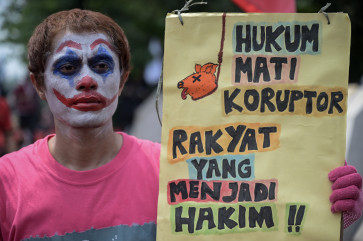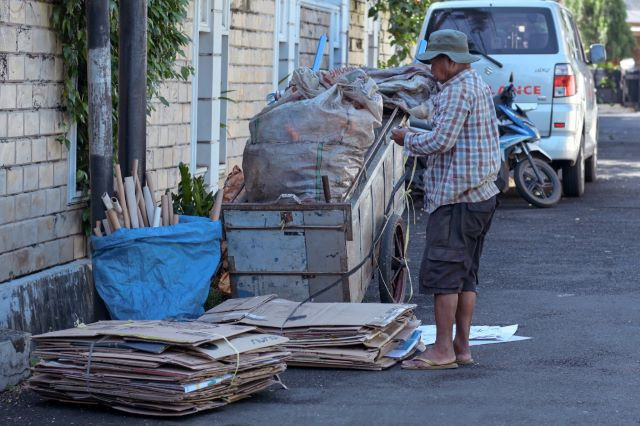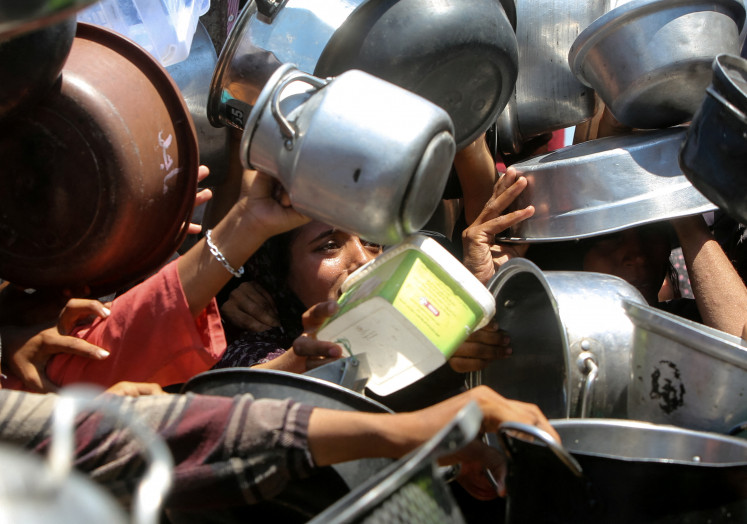Popular Reads
Top Results
Can't find what you're looking for?
View all search resultsPopular Reads
Top Results
Can't find what you're looking for?
View all search resultsDistributors look to non-miner clients to boost sales
Several heavy equipment distributors are looking to boost sales to clients outside the mining sector in 2013 to hedge against slow expansion due to unfavorable commodity prices
Change text size
Gift Premium Articles
to Anyone
S
everal heavy equipment distributors are looking to boost sales to clients outside the mining sector in 2013 to hedge against slow expansion due to unfavorable commodity prices.
Mining companies, especially coal mining companies, currently account for most heavy equipment purchases, although many have said that they would not purchase new equipment due to declining demand.
The main firm in the heavy equipment industry, publicly listed PT United Tractors (UNTR), expects to increase its sales to the construction sector next year, according to its chief.
“We are expecting that demand in the construction sector will increase, as we are heading into the general elections, when the number of infrastructure projects usually increases. However, in terms of value, this cannot beat sales to mining firms,” UNTR president director Djoko Pranoto said.
The heavy equipment used by miners is substantially heavier, and thus more expensive, than the equipment used in other industries.
Other distributors, PT Intraco Penta (INTA) and PT Kobexindo Tractors (KOBX), also expect to sell more heavy equipment to non-mining clients.
“About six months ago, about 80 percent of our sales went to mining industry. Today, it is about 50 percent,” INTA president director Petrus Salim said. The firm’s figures for next year would be similar, he said, while the portion of its sales to construction firms would increase to 30 percent and to plantation firms would increase to 20 percent.
Petrus said that INTA expected 15 to 25 percent sales growth next year and expected to sell 1,900 units by the end of 2012.
“We expect that the mining business will be stable,” Petrus said, adding that local miners had an advantage of low cost of production, unlike other countries. The current price of US$80 per ton of coal was better than the $40 to $50 recorded five or six years ago.
KOBX finance director Martio said that the company expected to increase its sales in the forestry and plantations sectors.
“We will continue to [sell] to mining, however we see decline in the sector, while there will be increase in forestry and plantations,” Martio said.
KOBX was optimistic that its final sales volume for the year would be close to its initial target of 1,100 units, which would be up about 12 percent compared to 975 in 2011. However, it also predicted that its revenue would be flat compared to last year, due to declining sales to mining sector.
While some competitors plan to increase sales in the construction, agriculture and forestry sectors, PT Hexindo Adiperkasa (HEXA) said that it would focus on cement producers.
According to a recent presentation, HEXA’s sales in agriculture sector contributed about 37 percent to its total sales volume during the April-to-July period, followed by the mining, forestry and construction sectors.
HEXA corporate secretary Zahirman said that the company evaluating its potential sales to cement firms.
“Cement companies are expanding, as demand is still higher than their production capacity. There is demand for middle-class heavy equipment from cement sector,” Zahirman said, adding that the company expected to sell 3,229 units by the end of its fiscal year in March.










